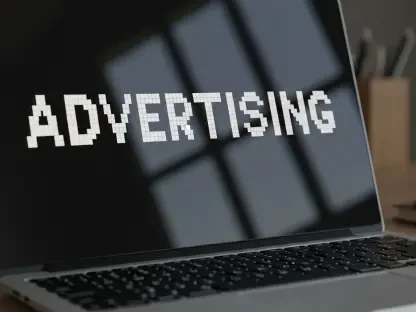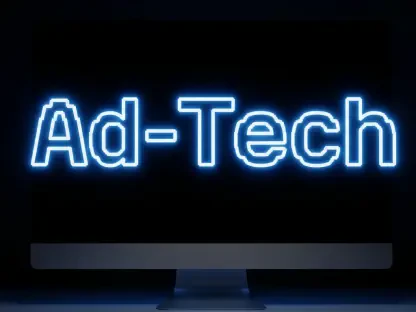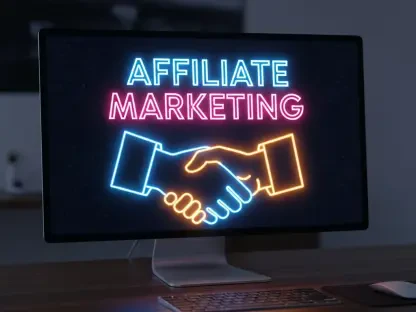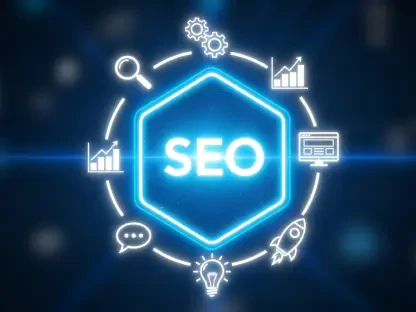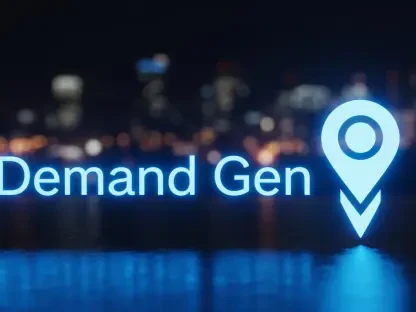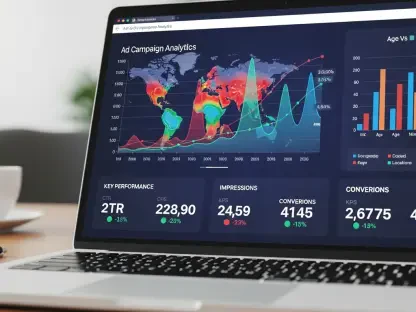Setting the Stage for a Digital Revolution
Imagine a world where content creators no longer depend on the whims of algorithm-driven social media giants to earn a living, a landscape where they wield full control over their revenue and fan relationships. This is no longer a distant dream but a tangible reality in 2025, as the creator economy surges to a staggering valuation of $250 billion. Creator-owned platforms have emerged as a powerful force, challenging traditional models by empowering individuals with tools for direct monetization and autonomy. This review delves into the transformative potential of these platforms, examining their core features, real-world impact, and the challenges they face in reshaping the digital content arena.
The shift toward creator-owned platforms comes at a critical juncture, as creators seek sustainable careers amid the unpredictability of conventional social media. With the creator economy projected to reach $480 billion by 2027, these platforms are not just a trend but a fundamental restructuring of how content is produced and monetized. The focus here is to provide a comprehensive analysis of their capabilities, spotlighting innovations and hurdles, while assessing their broader influence on the industry.
Understanding the Core Concept
Creator-owned platforms have risen as a direct response to the constraints of traditional social media, where creators often lose significant earnings to platform fees and struggle with inconsistent visibility due to ever-changing algorithms. These new systems prioritize direct-to-fan engagement, allowing creators to build authentic connections without intermediaries. Autonomy stands at the heart of this model, enabling individuals to dictate their content strategies and revenue streams with unprecedented freedom.
In the broader context of the creator economy, these platforms address a pressing demand for control over audience relationships. Unlike older models reliant on brand deals or ad revenue, they foster environments where creators can directly monetize their work through innovative methods. This relevance is underscored by the growing number of creators migrating to such platforms, seeking stability in an industry often marked by uncertainty.
The significance of this shift cannot be overstated, as it redefines the power dynamics between creators and platforms. By placing creators at the center, these systems challenge the status quo, offering a blueprint for a more equitable digital ecosystem. This evolution reflects a broader movement toward empowerment, aligning with the needs of a diverse and expanding creator base.
Core Features and Innovations
Direct-to-Fan Monetization Models
One of the standout features of creator-owned platforms is their emphasis on direct-to-fan monetization, a model adopted by over 95% of creators for reliable income. Subscriptions, paid content, and personalized interactions form the backbone of this approach, enabling creators to bypass the volatility of ad-based earnings. This shift provides a level of financial control previously unattainable on algorithm-driven platforms.
Compared to the uncertainty of brand partnerships, these monetization strategies offer a stable foundation for creators to build their careers. Platforms now facilitate tailored experiences, such as exclusive content drops or one-on-one fan engagements, which deepen loyalty and boost revenue. This direct connection ensures that earnings reflect the true value of a creator’s work, rather than the whims of external factors.
Moreover, the flexibility of these models allows creators to experiment with pricing and offerings, catering to niche audiences with precision. The result is a more predictable income stream, which is critical for long-term sustainability in a competitive digital space. This financial empowerment marks a significant departure from past dependency on third-party intermediaries.
AI-Driven Tools and Efficiency
Artificial intelligence has become a cornerstone of creator-owned platforms, with around 90% of creators leveraging AI tools to enhance their workflows. From content creation to automated editing, these technologies streamline repetitive tasks, freeing up time for creative pursuits. Audience analytics powered by AI also provide insights into fan preferences, enabling data-driven decisions.
The role of AI extends beyond efficiency, as it helps creators scale their operations without sacrificing quality. Tools for optimizing pricing strategies or generating virtual companions introduce novel ways to engage fans, expanding the scope of interaction. Such innovations allow even solo creators to manage workloads that would typically require entire teams.
Additionally, AI’s capacity to personalize content recommendations ensures that fans receive tailored experiences, boosting retention rates. This technological integration not only enhances productivity but also opens doors to new revenue opportunities, solidifying AI as an indispensable asset in the creator toolkit. The impact of these advancements is evident in the rapid growth of creators adopting such solutions.
Emerging Trends in the Creator Economy
The creator economy is witnessing a profound movement toward empowerment and independence, with a projected compound annual growth rate of 23.3% through 2033. This trajectory highlights a collective push for models that prioritize creator control over traditional, restrictive systems. The trend signals a maturing industry, one that values sustainability alongside innovation.
AI continues to act as a democratizing force, leveling the playing field for creators of all backgrounds. By reducing barriers to entry, such as high production costs, it enables solo entrepreneurs to compete with larger entities. Investor confidence in platforms often dubbed the “Shopify of the creator economy” further fuels this growth, with significant capital flowing into AI-driven solutions.
Cross-border collaborations and global reach are also shaping the landscape, as platforms facilitate connections across diverse markets. This expansion broadens opportunities for creators to tap into international audiences, amplifying their impact. Together, these trends paint a picture of an industry poised for exponential progress, driven by technology and creator-centric values.
Real-World Impact and Case Studies
Creator-owned platforms are proving their worth by fostering sustainable careers across a wide array of niches, from fitness to art. They provide the infrastructure for creators to thrive, offering tools that support both creative output and business growth. Real-world applications demonstrate how these systems transform passion into viable professions.
A leading example is Passes Inc., founded by Lucy Guo, which has set a high standard with its 90% revenue share model—far surpassing competitors. Combined with AI tools for content testing and audience engagement, Passes attracts prominent creators by prioritizing their financial and creative needs. Features like production hubs further enhance its appeal, providing physical spaces for content creation.
The success of Passes Inc. illustrates the tangible benefits of creator-owned models, as seen in the thousands of creators it supports, some earning substantial guaranteed incomes. This case study underscores the potential for such platforms to redefine career paths in the digital age, offering a glimpse into a future where creators hold the reins of their professional journeys.
Challenges and Barriers to Adoption
Despite their promise, creator-owned platforms face significant obstacles, including creator burnout, with 58% of individuals struggling to monetize effectively. The pressure to constantly produce content can take a toll, undermining the very independence these platforms aim to provide. Addressing this issue remains a critical challenge for the industry.
Legal and ethical concerns also loom large, particularly around content distribution and platform accountability. Allegations and disputes over intellectual property or misuse of content have sparked debates about trust and transparency. Platforms like Passes are actively working to build frameworks that prioritize sustainability and fairness, though solutions are still evolving.
Additionally, the reduction in diversity, equity, and inclusion initiatives has disproportionately affected multicultural creators, who often rely on external partnerships for income. This gap highlights the need for more inclusive policies to ensure equitable access to opportunities. Overcoming these barriers is essential for the long-term credibility and adoption of creator-owned platforms.
Future Outlook for Creator-Owned Platforms
Looking ahead, creator-owned platforms are poised for remarkable advancements, particularly in AI integration and scalability. Enhanced algorithms could further personalize fan experiences, while improved infrastructure may support even larger creator communities. The potential for global expansion also promises to connect creators with untapped markets.
The long-term impact on the creator economy appears transformative, as these platforms redefine digital work by prioritizing creator well-being alongside profitability. Balancing innovation with ethical responsibility will be key, ensuring that growth does not come at the expense of fairness or authenticity. This equilibrium will shape the industry’s trajectory in the coming years.
Moreover, as technology evolves, so too will the tools available to creators, potentially integrating virtual reality or other immersive formats for fan engagement. Such developments could cement these platforms as the backbone of digital content creation, influencing not just creators but the entire online ecosystem. The future holds vast possibilities for those who adapt to these changes.
Final Thoughts and Next Steps
Reflecting on this exploration, creator-owned platforms prove to be a game-changer in shifting control back to content creators, dismantling the dominance of traditional social media giants. Their innovative monetization models and AI-driven tools demonstrate a capacity to build sustainable careers, while case studies like Passes Inc. showcase real-world success. Challenges such as burnout and ethical dilemmas persist, yet the industry’s commitment to addressing these issues is evident.
Moving forward, stakeholders should focus on developing robust support systems to combat creator fatigue, perhaps through community-driven initiatives or mental health resources. Platforms must also invest in transparent policies to resolve legal concerns, ensuring trust remains a cornerstone of their operations. Encouraging diversity through targeted programs can further bridge existing gaps, making the creator economy truly inclusive.
As the landscape continues to evolve, collaboration between creators, platforms, and investors will be vital to sustain momentum. Exploring emerging technologies like augmented reality could unlock new dimensions of engagement, pushing the boundaries of what’s possible. The journey of creator-owned platforms has just begun, and active participation in shaping their future will determine the ultimate impact on digital content creation.



